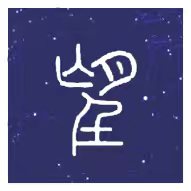Naturland标准与欧盟有机法规的一对一比较
A one-to-one comparison of the Naturland Standards with the EU organic regulation
Naturland标准与欧盟有机法规的 一对一比较
一对一比较
Naturland sets higher standards
Naturland设定了更高的标准
Standards define what is covered by the term “organic agriculture” and how this method of agriculture is to be put into practice. The Naturland standards define the comprehensive approach intrinsic to its understanding of organic agriculture as compared to the minimum legal standards which make up the EU regulation on organic farming.
标准定义了“有机农业”一词所涵盖的内容以及如何将这种农业方法付诸实践。与构成欧盟有机农业法规的最低法律标准相比,Naturland标准定义了其理解有机农业的综合方法。
Naturland has summarised the major differences for you between the Naturland standards and the EU organic regulation (Regulation (EU) 2018/848 and the subsequent legislative acts) in the table below.
Naturland在下表中为您总结了Naturland标准与欧盟有机法规(法规(欧盟)2018/848及随后的立法法案)之间的主要差异。
Naturland Standards Naturland标准 Version 05/2023 版本05/2023 | EU regulation 欧盟法规 on organic farming 论有机农业 |
1. GENERAL (inspection and transparency) 1.概述(检查和透明度) | |
Mandatory full farm conversion · 强制全场转换 | Partial farm conversion possible, with all the negative consequences (poor demarcation, inspection, credibility 可能进行部分农场改造,产生所有负面后果(划界、检查、可信度差 etc.) 等等) |
Implementation of requirements for social responsibility towards workers on Naturland farms world-wide · 实施对全世界Naturland农场工人的社会责任要求 | No regulation · 无规定 |
Prohibition of plant genetic engineering · 禁止植物基因工程 applicable immediately and directly to the entire farm, even in the case of gradual conversion to organic production. 即使在逐步转向有机生产的情况下,也可立即直接适用于整个农场。 | The same farm can grow plants · 同一个农场可以种植植物 organically side by side with conventional produced plants using genetically modified plants 与使用转基因植物生产的传统植物有机并排 |
Exclusion of nanomaterials in production and processing, due to their insufficiently known impact on the environment and human beings. Refers to all areas including external inputs. 由于对纳米材料对环境和人类的影响知之甚少,在生产和加工中排除了纳米材料。指包括外部输入在内的所有领域。 | Exclusion of nanomaterials only in food. 仅在食品中排除纳米材料。 |
Biogas plants on Naturland farms may only use a limited amount (30%) of vegetative material from conventional production which serves as fermentation material to operate the power plant. The choice of vegetative material is also severely Naturland农场的沼气厂只能使用有限数量(30%)的传统生产的营养物质作为发酵材料来运行发电厂。植物材料的选择也很严格 restricted. 受限制的。 | No regulation · 无规定 |
Regulations on sustainable use of water in areas with scarce water resources (e.g. submission of water management plan, use of efficient and water-saving irrigation 关于水资源稀缺地区可持续用水的规定(例如提交水管理计划、使用高效节水灌溉 systems, etc.) 系统等) | No regulation · 无规定 |
In addition to the ban on conversion of primary ecosystems (primeval forest, tundra, etc.), other natural ecosystems with high conservation values (so-called High Conservation Value Areas) are also · 除了禁止初级生态系统(原始森林、苔原等)的转换外,其他具有高保护价值的自然生态系统(所谓的高保护价值地区)也被禁止 subject to special protection. 受到特别保护。 | No regulation · 无规定 |
2. ARABLE FARMING 2.耕地 | |
Possible risk factors (dangerous waste, emission sources, and sources of contamination e. g. discharge of sewage · 可能的风险因素(危险废物、排放源和污染源,如污水排放) sludge) must be eliminated. 污泥)。 | No regulation · 无规定 |
A minimum percentage of legumes in the main crop (e. g. clover grass) in crop rotation is required a prerequisite which must be complied with before additional external organic fertilisers can be purchased. Legumes bind the nitrogen from the air and they are the most natural form of fertiliser. Growing legumes enriches the variety of · 轮作中主要作物(如三叶草)中豆类的最低百分比是一个先决条件,在购买额外的外部有机肥料之前,必须遵守该先决条件。豆类吸收空气中的氮,是最天然的肥料。种植豆类丰富了 crop rotation and reduces disease pressure. 作物轮作并降低疾病压力。 | No regulation · 无规定 |
When purchasing external inputs (e.g. farm- 购买外部投入时(如农场- produced fertiliser, fodder), these must be bought from Naturland farms or meet Naturland’s respective quality assurance requirements 生产的化肥、饲料),这些必须从Naturland农场购买或符合Naturland各自的质量保证要求 | No regulation · 无规定 |
Positive list of permissible cleaning and · 允许清洁和 disinfection agents for machines, equipment and plant used in plant production 用于工厂生产的机器、设备和工厂的消毒剂 | No regulation · 无规定 |
3. FERTILISERS 3.化肥 | |
Clearly defined requirements of organic fertilisation: 明确规定的有机施肥要求: The stronger limitation of the permissible animal stocking density (see 4.) and the limitation of the additional purchase · 允许动物放养密度的更强限制(见4.)和额外购买的限制 quantity of fertilizers (see below) results in a 肥料的数量(见下文)导致 | “Conventional fertilisation” possible with organic fertilisers: 有机肥料的“常规施肥”可能: No limitation on total fertiliser amount (internal and external) - only farm manure of animal origin is limited. 对肥料总量(内部和外部)没有限制——只有动物来源的农家肥受到限制。 Purchase of additional commercial 购买额外的商业 |
stronger limitation of the total amount of fertilisers which can be applied on the farm (from own animal husbandry and external fertilisers) 对农场可施用的化肥总量进行更严格的限制(来自自己的畜牧业和外部化肥) | fertiliser and thus significantly higher fertiliser input is possible. 化肥,从而显著提高化肥投入是可能的。 |
Restriction on the source and kind of organic fertiliser purchased: 对购买的有机肥料的来源和种类的限制: Only solid manure (except for poultry manure) from conventionally managed farms. Fermentation residue from biogas plants only if the organic farm's own fermentation material has been · 只有来自传统管理农场的固体肥料(家禽粪便除外)。只有当有机农场自己的发酵材料已经过 fermented in it and no liquid manure or poultry manure from conventional animal husbandry was used in the biogas plant; quantities limited. 在其中发酵,并且在沼气厂中不使用来自传统畜牧业的液体粪肥或家禽粪肥;数量有限。 Conventional poultry manure and conventional liquid manure are prohibited. 禁止使用传统的家禽粪便和传统的液体粪便。 Animal meal, blood and bone meal (even as fertilisers) prohibited 禁止动物餐、血液和骨粉(甚至作为肥料) | Almost free import of commercial fertilisers, even in the form of conventional liquid manure or poultry manure with no further requirements (only those from “industrial” sources are excluded). 商业肥料几乎免费进口,即使是传统的液体肥料或家禽粪便,也没有进一步的要求(只有来自“工业”来源的肥料除外)。 Animal meal, blood meal and bone meal are permitted and may be purchased as organic fertilisers (risk of BSE1) · 动物餐、血粉和骨粉是允许的,可以作为有机肥料购买(BSE1风险) |
Permissible amount of commercial 商业许可量 organic fertiliser or farm manure which may be purchased is restricted to 0.5 Dung Unit (DU)/hectare (except where required for certain specialised crops). 可购买的有机肥料或农家肥限制在0.5磅/公顷(某些特殊作物需要的除外)。 | No limit to amount of fertiliser which 化肥的数量没有限制 may be purchased. This means that a farm can rely solely on external fertiliser. 可以购买。这意味着农场可以完全依靠外部肥料。 |
4. ANIMAL HUSBANDRY 4.畜牧业 | |
The permissible stocking density (animals per hectare of farmland) is more stringent, to guarantee an even balance between fodder and the area to which their manure is applied. · 允许的放养密度(每公顷农田的动物)更为严格,以确保饲料和粪便施用面积之间的平衡。 Maximum stocking density/hectare of farmland: · 最大放养密度/公顷农田: 140 hens 140只母鸡 280 broilers 280只肉鸡 10 fattening pigs 10头肥猪 | Maximum stocking density/hectare of farmland: particularly in the critical sectors of product transformation, considerably more animals are possible – with all the ensuing problems (ground water, nitrate accumulation etc.). 每公顷农田的最大放养密度:特别是在产品转型的关键部门,可能会有更多的动物——随之而来的所有问题(地下水、硝酸盐积累等)。 The maximum limits/hectare of farmland are: · 每公顷农田的最大限制为: 230 hens (64% higher nitrogen discharge) 230只母鸡(氮排放量高出64%) 580 broilers (107% higher) 580只肉鸡(高出107%) 14 fattening pigs (40% higher) 14头肥猪(高出40%) Besides this, it is even possible for EU member states to increase the maximum number of animals allowed · 除此之外,欧盟成员国甚至有可能增加允许的最大动物数量 per hectare 每公顷 |
Laying hens: When calculating the free-range areas, only those areas are included · 蛋鸡:计算放养面积时,只包括这些面积 which the birds actually do use; 鸟类实际使用的; | All areas up to 350 m away from the stable can be taken into account 距离马厩350米以内的所有区域都可以考虑在内 when calculating the free-range 计算自由范围时 |
1 bovine spongiform encephalopathy
consequently, any areas which are over 150 m from the stable do not count. 因此,任何距离马厩超过150米的区域都不算在内。 Outdoor access is mandatory at all times. Even in bad weather periods, access to an outdoor area is ensured, as covered outdoor areas are mandatory. · 户外通道在任何时候都是强制性的。即使在恶劣天气时期,也要确保进入室外区域,因为有盖的室外区域是强制性的。 In any one building complex max. four separated stable units à max. 3.000 laying hens are permitted. · 在任何一个建筑群中,最多允许四个独立的稳定单元,最多允许3000只蛋鸡。 One brother from each laying hen must be raised organically. 每只下蛋的母鸡中必须有一个兄弟是有机饲养的。 | areas - even if they are hardly used or not used at all. 区域——即使它们几乎没有使用或根本没有使用。 Laying hens must always have access to free-range areas, if the weather permits. In bad weather periods the animals do not have access to an outdoor area, as roofing required for this purpose is not mandatory. · 如果天气允许,蛋鸡必须始终能够进入自由放养区。在恶劣天气时期,动物无法进入室外区域,因为为此目的所需的屋顶不是强制性的。 No regulation · 无规定 No regulation · 无规定 |
Separate specific regulations for rearing of pullets, e. g. feeding with organic fodder, no coccidiostatics, chicken runs available even at this stage 饲养小母鸡有单独的具体规定,例如用有机饲料喂养,没有球虫抑制剂,即使在这个阶段也有鸡群 | No regulation · 无规定 |
Prohibition of cow trainers (electrical aids used to prevent the cows’ natural excretion behaviour) · 禁止驯牛师(用于防止奶牛自然排泄行为的电气辅助设备) | No regulation · 无规定 |
Detailed regulations for the transport of animals for slaughter, e.g. space requirements, maximum transport times 屠宰动物运输的详细规定,如空间要求、最大运输时间 and distances, etc. 以及距离等。 | No regulation · 无规定 |
5. FODDER 5.饲料 | |
Self-sufficiency with farm-grown fodder is 农场种植的饲料自给自足 to be aimed at; at least 50% of the fodder must come from the farm itself (nutrient cycle) – also in the case of pigs 目标;至少50%的饲料必须来自农场本身(营养循环)——猪也是如此 and poultry! (or from a farm which supplies fodder under a contractual agreement approved by Naturland and, in return, applies the manure from its partner’s farm to its own fodder crops). 和家禽!(或根据Naturland批准的合同协议供应饲料的农场,作为回报,将其合作伙伴农场的肥料用于自己的饲料作物)。 | In the case of pigs and poultry, only 就猪和家禽而言,仅 30% of the fodder must be grown on the farm itself or "in the same region". 30%的饲料必须种植在农场本身或“同一地区”。 |
The positive list of feed for monogastric mammals and birds (only for piglets and young poultry) which is not yet available in sufficient quantity from organic sources, is restricted to a very few, clearly defined protein feedstuffs. · 单胃哺乳动物和鸟类(仅适用于仔猪和幼禽)的积极饲料清单,尚未从有机来源获得足够数量的饲料,仅限于极少数明确定义的蛋白质饲料。 | There is no longer a positive list of conventional fodder that may be used. Consequently, any protein feedstuffs, being from vegetative or animal sources, may be used for piglets and young poultry, if they are produced and treated without · 不再有可以使用的常规饲料的正面清单。因此,任何来自植物或动物来源的蛋白质饲料,如果在不含蛋白质的情况下生产和处理,都可以用于仔猪和幼禽 the use of chemical solvents. 化学溶剂的使用。 |
Dairy and mother cows, sheep and goats: exclusive feeding with silage all year round is prohibited. In summer, green forage must be offered. This is usually covered by the mandatory grazing required by Naturland. Only in a few, justified exceptional cases an · 奶制品和母牛、绵羊和山羊:禁止全年只喂青贮饲料。夏天,必须提供绿色饲料。这通常包含在Naturland要求的强制放牧范围内。只有在少数合理的特殊情况下 exemption to mandatory grazing can be 可以豁免强制放牧 | No regulation, which means that even in summer, when fresh grass would be available, it is possible to feed the cattle silage only · 没有规定,这意味着即使在夏天,当有新鲜的草时,也可以只喂牛青贮饲料 |
prompted. In these cases, green feeding in the stable is mandatory. 提示。在这些情况下,马厩里的绿色喂养是强制性的。 | |
Concentrated feed that are in competition with food products for human consumption is limited to a maximum of 20% of the annual ration on the farm for dairy cows. 与供人类食用的食品竞争的浓缩饲料最多只能占奶牛场年口粮的20%。 | Concentrated feed use in dairy cows allowed up to 40% of the ration (even up to 50% for 3 months). 奶牛使用浓缩饲料可获得高达40%的日粮(甚至3个月可达到50%)。 |
6. VEGETABLE GROWING/SPECIAL CROPS/PERMANENT TROPICAL 6.蔬菜种植/特殊作物/永久性热带作物 PLANTATIONS 种植园 | |
Prohibition of CMS hybrids (cytoplasmic male sterility) from protoplast fusion -transfer of genetic material from one species to another in a manner which is not possible naturally · 禁止CMS杂交种(细胞质雄性不育)进行原生质体融合——以自然不可能的方式将遗传物质从一个物种转移到另一个物种 (with traditional cultivation techniques) (transition to genetic engineering processes) (使用传统的培养技术)(向基因工程过程过渡) | Use of CMS hybrids permissible 允许使用CMS杂交种 |
Prohibition of pyrethroids 拟除虫菊酯类的禁用 | Use of pyrethroids (= synthetic 拟除虫菊酯类的使用 insecticides) permitted 杀虫剂) |
Prohibition of chemically synthesised inputs · 禁止化学合成输入 | Approval of chemically synthesised inputs (art. 24) can be given in 化学合成输入的批准(第24条)可在 exceptional cases. 例外情况。 |
The amount of copper (Cu salts) permissible · 允许的铜(铜盐)量 is strictly limited: max 3 kg/hectare/year; max. 4 kg/hectare/year for hops. 严格限制:最高3公斤/公顷/年;啤酒花最高4公斤/公顷/年。 | Use of copper: considerably higher 铜的使用:相当高 single-year quantities permissible -and higher applications are also permitted as a 7-year average: up to 28 kg within 7 years. 允许的单年数量——7年平均值也允许更高的应用:7年内最多28公斤。 |
Open field vegetable cultivation: limitation · 露地蔬菜种植:局限性 of the total amount of fertiliser of 110 kg nitrogen/hectare and year 每公顷和一年110公斤氮的化肥总量 | No special consideration of total · 没有特别考虑总数 permissible amount of nitrogen fertilisers in open field vegetable cultivation 露地蔬菜栽培中氮肥的允许施用量 |
Mushroom cultivation: organic source materials, components and supplementary substances of the substratum must come from organic production · 蘑菇种植:基质的有机原料、成分和补充物质必须来自有机生产 | Substratum may contain up to 25% conventional substances (e. g. poultry manure). · 基质可能含有高达25%的常规物质(如家禽粪便)。 |
Viticulture/fruit cultivation: limitation of the total amount of fertiliser in a three-year rotation cycle (total of max. 150 kg of nitrogen/hectare) in viticulture and of 90 kg nitrogen/hectare and year in fruit cultivation · 葡萄栽培/水果栽培:葡萄栽培中三年轮作周期内的肥料总量限制(每公顷最多150公斤氮),水果栽培中每公顷和每年90公斤氮 | No special consideration of total permissible amount of nitrogen fertilisers in viticulture/fruit cultivation 在葡萄栽培/水果栽培中,没有特别考虑氮肥的允许总量 |
Restriction of use of peat to a maximum of 80% for seedlings (including potted herbs) and to a maximum of 50% in all other substrates (e. g. potted ornamental plants, tree nursery containers etc.), no extensive application as an input for enriching the soil 将泥炭的使用限制在幼苗(包括盆栽草本植物)的最高80%和所有其他基质(如盆栽观赏植物、苗圃容器等)的最高50%,没有广泛应用作为土壤肥沃的投入 | No restriction on the amount of peat; turf may be used 100% in substrates and applied extensively to enrich the soil. 泥炭的数量没有限制;草皮可以100%用作基质,并广泛应用以丰富土壤。 |
Coffee and cocoa must be cultivated in an · 咖啡和可可必须在 agroforestry system with shade trees and a large variety of plant species. 具有荫蔽树和多种植物的农林系统。 | No specific regulations for tropical permanent crops · 没有针对热带永久作物的具体规定 |
Bananas are to be cultivated in mixed crops or agroforestry systems. If this type of cultivation is not feasible, a biodiversity area around and in the crop of up to 10% is required for plantations areas from 5 ha onwards. · 香蕉将在混合作物或农林业系统中种植。如果这种类型的种植不可行,则从5公顷起的种植区需要周围的生物多样性区域和高达10%的作物。 | No specific regulations for tropical permanent crops · 没有针对热带永久作物的具体规定 |
7. AQUACULTURE 7.水产养殖 | |
In accordance with welfare-oriented animal husbandry and ecological balance, the stocking densities are more limited to: · 根据以福利为导向的畜牧业和生态平衡,放养密度更多地限制在: 20 kg trout & arctic charr per cubic metre 每立方米20公斤鳟鱼和北极炭 10 kg seabream and seabass per cubic Metre 每立方米10公斤鲷和鲈鱼 160 g shrimps per square metre 每平方米160克虾 | For EU organic operations, higher maximum upper limits apply: · 对于欧盟有机经营,适用更高的最大上限: up to 25 kg trout & arctic charr per cubic metre 每立方米最多25公斤鳟鱼和北极炭 up to 15 kg seabream and seabass per cubic metre 每立方米最多15公斤的沙鱼和鲈鱼 up to 240 g shrimps per square metre 每平方米最多240克虾 |
Antibiotics and conventional medication are forbidden for shrimps. 禁止使用抗生素和常规药物治疗虾。 For fish, the use of conventional medication is strongly limited. 对于鱼类,传统药物的使用受到很大限制。 | Antibiotics and conventional medication are permitted for shrimps. 允许使用抗生素和常规药物治疗虾。 For fish, the regulations concerning conventional treatments are less strict as well (general permission of conventional medication, no or only little limitation 对于鱼类,有关常规治疗的规定也不那么严格(常规药物的一般许可,没有或只有很少的限制 according to species and number of treatments). 根据处理的种类和数量)。 |
Regular analyses of water, sediment, feed · 定期分析水、沉积物、饲料 and finished product are required. 并且需要成品。 | Analyses are not mandatory. · 分析不是强制性的。 |
Shrimp producers are obliged to reforest · 虾生产商有义务重新造林 former mangrove areas. 以前的红树林地区。 | No regulation · 无规定 |
Specific requirements apply to the keeping · 具体要求适用于保管 of cleaner fish such as: 清洁鱼类,如: The installation of shelters to increase animal welfare. Provision of organic supplementary feed adapted to the respective species. 安装庇护所以增加动物福利。提供适合各物种的有机补充饲料。 | No regulation · 无规定 |
8. IMPORTANT EXAMPLES IN THE SPHERE OF PROCESSING 8.加工领域的重要例子 | |
Source of raw goods is clearly defined and complies with the requirements of Naturland’s standards · 原料来源明确且符合Naturland标准的要求 | Any raw goods from sources anywhere in the world possible (focus on lowest possible global prices) from producers working to the lowest possible permissible standards, even, for example, from countries only operating to standards equivalent to the EU · 来自世界任何地方的任何原材料(关注尽可能低的全球价格),来自尽可能低允许标准的生产商,甚至来自仅按照与欧盟同等标准运营的国家 organic regulation 有机调节 |
Processing standards specific to certain product groups, e. g. comprehensive and detailed processing standards for milk and dairy products, meat and meat products, aquaculture products, etc. · 特定产品组的加工标准,例如牛奶和乳制品、肉类和肉制品、水产养殖产品等的全面和详细的加工标准。 | Appendix VIII of the regulation governs the ingredients, additives and auxiliary substances permitted. Permission is general: only in isolated cases is permission for ingredients, additives and auxiliary substances restricted to individual groups of products or specific purposes · 该法规附录八规定了允许使用的成分、添加剂和辅助物质。许可是一般性的:只有在个别情况下,才允许将成分、添加剂和辅助物质仅限于个别产品组或特定用途 |
Exclusion of certain processing methods (e. g. prohibition of enzymes for bread and bakery products, fining using “Farbebier” (a special colour preparation) or roasted malt extract, the chemical modification of edible fats, etc.) · 排除某些加工方法(例如,禁止面包和烘焙产品使用酶,使用“Farbebier”(一种特殊的颜色制剂)或烤麦芽提取物进行精制,对食用脂肪进行化学改性等) | No regulation · 无规定 |
No possibility to label individual ingredients as organic (i. e. if the actual product is not organic, but only a small portion). · 不可能将单个成分标记为有机成分(即,如果实际产品不是有机的,而是一小部分)。 | Risk of deceptive advertising due to the possibility of labelling individual ingredients as organic in the list of 由于可能在列表中将个别成分标记为有机成分,因此存在欺骗性广告的风险 ingredients in a conventional product with less than 95% organic share. 传统产品中有机份额低于95%的成分。 |
Positive list of permissible food additives is much shorter and restricted to specific purposes and product groups. Naturland allows less than half of the permissible EU 允许食品添加剂的正面清单要短得多,并且仅限于特定用途和产品组。Naturland允许不到欧盟允许的一半 additives (56). 添加剂(56)。 | More general positive list of permissible food additives. EU processors can use 56 different additives · 更普遍的允许食品添加剂的正面清单。欧盟加工商可以使用56种不同的添加剂 |
Restrictive permission for the use of natural 使用天然气的限制性许可 flavourings and enzymes specific to specific product groups 特定产品组特有的调味品和酶 | General permission for natural flavourings and enzymes 天然香料和酶的一般许可 |
The preservation of shrimps with sodium 钠对虾仁的保鲜作用 metabisulphite (suspected to be allergenic or to trigger asthma) is not allowed. 不允许使用偏亚硫酸酯(怀疑有致敏性或引发哮喘)。 | The use of sodium metabisulphite for · 偏亚硫酸氢钠的用途 preservation is allowed. 允许保存。 |
Salting by injection for fish smoking is not 注射腌制熏鱼是不可能的 allowed. 允许。 | Salting by injection is allowed. 允许注射加盐。 |
For fodder processing, the processing plant (dedicated solely to organic fodder) must be installed in a separate area to the one used to process conventional fodder. · 对于饲料加工,加工厂(专门用于有机饲料)必须安装在用于加工传统饲料的独立区域。 | Conventional and organic fodder can be processed in the same plant (risk of contamination) · 传统饲料和有机饲料可以在同一工厂加工(有污染风险) |
Comprehensive standards on transport · 全面的运输标准 and slaughtering with detailed regulations on the transport of animals for slaughter (incl. equipment used in vehicles to transport livestock), delivery and transfer to the slaughterhouse, housing, stunning and bleeding. 以及屠宰,详细规定了用于屠宰的动物运输(包括运输牲畜的车辆中使用的设备)、交付和转移到屠宰场、住房、电击和放血。 | No regulation. · 没有规定。 |
Products that explicitly target children through presentation and marketing must comply with the recommendations of the World Health Organization (WHO) to protect this particular consumer group from 通过展示和营销明确针对儿童的产品必须符合世界卫生组织(世界卫生组织)的建议,以保护这一特定消费者群体免受 products with an unbalanced nutritional 营养不均衡的产品 | No regulation · 无规定 |
profile (exception for traditional seasonal products for a limited period). 个人资料(在有限的时间内,传统季节性产品除外)。 |
Partial conversion to organic: 1. 部分转化为有机物: An EU organic farmer can convert part of his farm only to organic agriculture (e. g. dairy cattle). 一个欧盟有机农场主只能将他的农场的一部分改为有机农业(例如奶牛)。 At the same time the farmer can continue to keep conventional battery hens (small group systems) and feed them on medicated intensive fodder. · 同时,农民可以继续饲养传统的电池母鸡(小组系统),并用药物强化饲料喂养它们。 The poultry manure, with all its residual risks, can even be spread on the fodder-growing areas of the organic section of the farm. · 家禽粪便及其所有残留风险甚至可以扩散到农场有机部分的饲料种植区。 The milk is sold in the shops as organic, from cows kept and fed according to the principles of organic farming. · 这些牛奶在商店里以有机牛奶的形式出售,来自根据有机农业原理饲养和喂养的奶牛。 If the farmer who has converted only part of his farm to organic wants to, he can continue to have conventional artificial fertiliser in stock, and no-one would be able to prove which areas he applied it to. · 如果只将部分农场改为有机肥料的农民愿意,他可以继续储备传统的人工肥料,没有人能够证明他在哪些地区使用了这种肥料。 |
No fodder produced on the farm: 农场没有生产饲料: A large facility with laying hens, managed according to the EU organic standards, can be run without producing any of its own fodder - only 30% of fodder has to be produced “in the same region”. 根据欧盟有机标准管理的蛋鸡大型设施可以在不生产任何自己的饲料的情况下运营——只有30%的饲料必须在“同一地区”生产。 The producer can feed his hens with fodder purchased completely from external sources, even from abroad, and have it transported to his country by ship (risk of genetic engineering). · 生产者可以用完全从外部来源,甚至从国外购买的饲料喂养母鸡,并通过船运将其运到自己的国家(存在基因工程风险)。 If the producer complies with EU organic standards, he can keep many more animals –because he is not required to produce his own fodder (and also the limits of animal stocking density are higher). · 如果生产者符合欧盟有机标准,他可以饲养更多的动物——因为他不需要自己生产饲料(而且动物饲养密度的限制更高)。 The gained manure has to be disposed of in other areas and can lead to overfertilisation and contamination of the soil and ground water there. 获得的肥料必须在其他地区处理,这可能会导致过度施肥,并污染那里的土壤和地下水。 Fodder and manure have to be transported long distances in some cases, which makes a considerable negative impact on the climate. 在某些情况下,饲料和粪肥必须长途运输,这对气候产生了相当大的负面影响。 |
No limit to amount of fertiliser: 化肥用量无限制: An EU organic farm is allowed to buy and use further commercial fertilisers containing nitrogen, without restriction, to be used in addition to the fertiliser it produces itself. 欧盟有机农场被允许在不受限制的情况下购买和使用除自身生产的化肥外还可使用的含氮商业化肥。 This considerably increases the risk of high rates of nitrate e. g. in vegetables – and at the same time of nitrate leaching or displacement into the ground water. · 这大大增加了硝酸盐高含量的风险,例如蔬菜中的硝酸盐,同时硝酸盐浸出或转移到地下水中。 |
Fertilisers from questionable sources: 来源可疑的肥料: An EU organic arable farm can fertilise its organic areas on a regular basis with conventional liquid manure from pigs or conventional poultry manure – i. e. fertilisers from problematical farming systems. 欧盟有机耕地农场可以定期用猪的传统液体肥料或传统家禽粪便(即有问题的农业系统的肥料)为其有机区域施肥。 The excrement of these species in particular is more often found to contain antibiotics (problems associated with residues and resistance) and other medication under conventional farming conditions. · 特别是在传统农业条件下,这些物种的排泄物往往含有抗生素(与残留物和耐药性相关的问题)和其他药物。 The conventional fertiliser can be procured from a neighbour with a conventional farm or even from conventional parts of the farmer’s own farm, which leaves the door wide open to abuse (surveillance problems). · 传统肥料可以从拥有传统农场的邻居那里购买,甚至可以从农民自己农场的传统部分购买,这为滥用(监控问题)敞开了大门。 It is then no longer necessary for the farmer to grow his own legumes, which is the actual basis of nutriment supply in organic agriculture. However, this will lead to greater disease pressure on the additional r crops. · 农民不再需要种植自己的豆类,这是有机农业营养供应的实际基础。然而,这将给额外的r作物带来更大的疾病压力。 |
The farm could also apply to animal meal or bone meal, which are considered critical since BSE times. 该农场也可以应用于动物餐或骨粉,自疯牛病时代以来,这被认为是至关重要的。 |
Dangerous waste: 5. 危险废物: A problematic history or even dangerous waste is not considered an important issue on EU farms. 有问题的历史甚至危险的废物在欧盟农场并不被视为重要问题。 Areas of an EU organic farm on which sewage sludge was discharged for a long period and up to shortly before conversion can be producing organic fodder twelve months later, which may comprise up to 100% of the fodder used on the farm itself, for example as feed for its cows, the milk of which can then already be labelled as organic. 欧盟有机农场的污泥长期排放到其上,直到转化前不久,这些区域可以在12个月后生产有机饲料,这可能占农场本身使用的饲料的100%,例如用作奶牛的饲料,然后其牛奶可以被标记为有机。 |
Controllability/credibility: 6. 可控性/可信度: A farm specialising in growing vegetables e.g. farms 40 hectares and decides to convert four hectares to organic agriculture according to the EU regulation on organic farming. 一个专门种植蔬菜的农场,例如40公顷的农场,并决定根据欧盟关于有机农业的规定,将4公顷土地转为有机农业。 Accordingly, the farmer can then grow, for example, organic kohlrabi on these four hectares, for sale. He can also grow kohlrabi on his conventionally farmed area, as long as it is a different variety (parallel production = surveillance problems). · 他也可以在他的传统养殖区种植大头菜,只要它是不同的品种(平行生产=监测问题)。 The farmer specialising in growing vegetables can, however, legally establish two separate entities (two different limited liability companies). He can be farm manager on both and could produce vegetables of organic and conventional quality in the immediate vicinity of each other (parallel production = surveillance problems). 然而,专门种植蔬菜的农民可以合法地成立两个独立的实体(两个不同的有限责任公司)。他可以同时担任这两方面的农场经理,并可以在彼此紧邻的地方生产有机和传统质量的蔬菜(平行生产=监控问题)。 A conventional strawberry farm with 30 hectares of pick-your-own strawberries can include an organic strain in its range, grown on an adjoining one ha strawberry field. Such constellations soon reach the limits of controllability. · 一个拥有30公顷自行采摘草莓的传统草莓农场,可以在其范围内种植一种有机品种,种植在毗邻的一公顷草莓地上。这样的星座很快就达到了可控性的极限。 |
Social aspects: 7. 社会方面: In many countries there are comprehensive laws governing working conditions and social aspects. However, they are often poorly implemented or monitored. Naturland’s social standards are part of the general production and processing standards and compliance to them is regularly monitored in the course of organic inspections. 在许多国家,有关于工作条件和社会方面的全面法律。然而,它们的实施或监测往往很差。Naturland的社会标准是一般生产和加工标准的一部分,在有机检查过程中定期监测其遵守情况。 In the plant, for example, of a processor in Africa or Asia adhering to the EU regulation on organic farming, there are no mechanisms to inspect social aspects besides those established by the state. 例如,在遵守欧盟有机农业法规的非洲或亚洲加工商的工厂中,除了国家建立的机制外,没有任何机制来检查社会方面。 This can mean, for example, that: 例如,这可能意味着: some children have to spend so much time at work that it is impossible for them to attend school regularly. · 有些孩子不得不花太多时间在工作上,以至于他们不可能定期上学。 safety in the workplace is not taken seriously and, for example, potentially very dangerous areas, such as stairs or machines, are not guarded or marked. This can present great risk to accidents for all the workers. 工作场所的安全没有得到重视,例如,楼梯或机器等潜在的非常危险的区域没有得到保护或标记。这会给所有工人带来很大的事故风险。 plants do not pay their workers a fixed f minimum wage. · 工厂不向工人支付固定的最低工资。 an employer makes it difficult or impossible for unions to be established or workers to perform collective activities. · 雇主使工会的成立或工人开展集体活动变得困难或不可能。 |
The examples cited below describe situations in practice which comply with the EU regulation on organic farming but are not possible under the Naturland standards.
下面引用的例子描述了实践中符合欧盟有机农业法规但在Naturland标准下不可能的情况。




